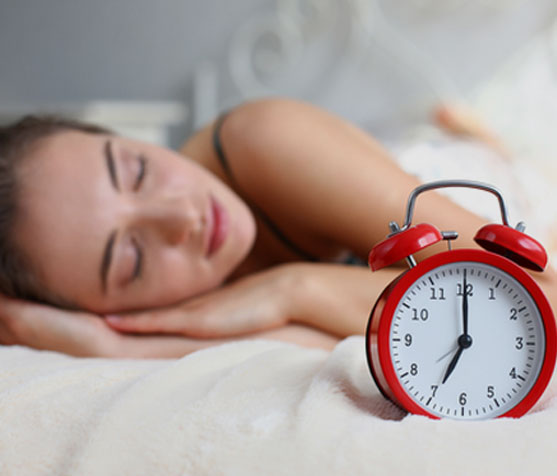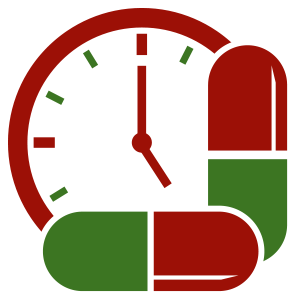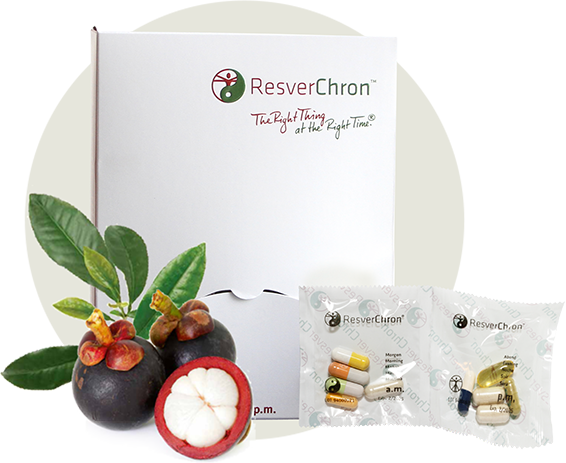About Chronobiology
ResverChron® is formulated to follow the science of chronobiology and is formulated by doctors and medical scientists.
ResverChron® is a science-based formula, designed with the highest quality ingredients, to provide reliable nutritional results you can trust.

The four principles of
chronotherapy:
Chronotherapy works effectively through a combination of the optimal ingredients, the right dosage amounts, and an understanding of the select organs or relationships involved, in order to deliver the substances at the most effective time of day to yield the best results.
Chronobiology is a scientific field that studies the natural biological rhythms of living organisms and how they are affected by time and other external cycles. Chronobiology is further broken down into three areas of study;
The three areas of study
of chronobiology:
Chronophysiology deals with the biological basics of living organisms and discovering which systems generate certain rhythms. Chronopathology focuses on finding out which health dangers can be found when the physiological processes of chronobiology are disturbed. Finally, chronopharmacology (also known as chronotherapy), determines which therapeutic approaches yield the best results based on biological rhythms and chronobiology findings.

The History of Chronobiology
The beginnings of Chronobiology date back to the 18th century, when astronomer Jean Jacques d’Ortous de Mairan studied the daily leaf movements of the Mimosa plant. In his experiments, he was able to show that the leaves of the Mimosa continued to swing in a way that appeared to be influenced by the earth’s 24-hour light/dark cycle, even when they were isolated in permanent darkness. Over time, renowned scientists like Georg Christoph Lichtenberg, Christoph Wilhelm Hufeland, Carl von Linné, and finally, yet importantly, Charles Darwin reported similar rhythmic phenomena. Despite these findings, it wasn’t until the 20th century that the scientific research of Chronobiology officially began, ranking Wilhelm Pfeffer, Erwin Bünning, Karl von Frisch, Jürgen Aschoff, Colin Pittendrigh, and Arthur Winfree among its pioneers.
Before 1960, chronobiology, biological rhythm research, and sleep research were largely independent enterprises. In the early 1970s, interactions between the areas of chronobiology and sleep research increased, and chronobiologists began correlating biological rhythms and sleep patterns.
Skip ahead, and in 2017 the study of chronobiology made world news when researchers won the Nobel Prize in Physiology or Medicine for their findings on circadian rhythms and how our inner clock adapts our physiology to the dramatically different phases of the day.
Over the years, the knowledge of chronobiology and the surrounding research has expanded and the focus of chronopharmacology, also known as chronotherapy, has become a key focus to many in the medical and health professions.

The Three Cycles of Chronobiology
There are three basic types of cycles, or rhythms, that chronobiology studies account for. These are circadian rhythms (the most well-known), infradian rhythms and ultradian rhythms.
(from the Latin circa, meaning approximately, and diem, meaning day)
Circadian rhythms are physiological rhythms governed by the natural 24-hour light/dark cycle of the earth’s rotation. The human sleep-wake cycle and the daily leaf movements of certain plants are just two examples of circadian rhythms. Many effects of circadian rhythms directly and immediately affect humans, thus they are the most extensively researched of all biological rhythms and of primary focus within the science of Chronobiology, especially when it comes to chronopharmacology/chronotherapy.
(derived from the Latin word infra, meaning “below,” and the Latin word diem, meaning “day” - breaking down the origin of the word, Infradian means the period of this rhythm is longer than 24-hours, therefor, the frequency is below/under those of one day.)
Infradian rhythms are longer than 24-hour circadian rhythms, with one complete cycle taking 28-hours or more. Examples of infradian rhythms are a woman’s menstrual cycle, the change of tides, animal breeding cycles and seasonal rhythms.
(derived from the Latin ultra, meaning “beyond,” and from the Latin word diem, meaning “day” - breaking down the origin of the word, Ultradian means the period of this rhythm is shorter than 24-hours, and therefor has a frequency beyond/higher than one day.)
Ultradian rhythms are cycles that are shorter than the 24-hour circadian rhythm, but longer than one hour. In other words, ultradian rhythms typically occur multiple times a day. Examples of ultradian rhythms are the feeding cycles of many animals, the 90-minute-long sleep cycle of adult humans and the secretion patterns of certain hormones.

Chronobiology for Anti-Aging
The recent anti-aging medicine movement has set a high goal for itself: seeking to modify biological processes in the human body that were imprinted over millions of years. There is a predetermined lifespan for every organ and tissue in the body. The evolutionary history of the human aging process spans millennia; now, researchers are increasingly confident that it will become possible to halt or even reverse it within just a few decades.
When it comes to Chronopharmacology, or Chronotherapy, the chronobiological process works effectively through taking everything we know about the various chronobiology cycles listed above in relation to the anti-aging processes and combining the optimal substances and ingredients and the exact dosage of each ingredient needed. By understanding of the complex relationships involved between cycles and ingredients and dosage, scientists, researchers and doctors are then able to administer these ingredients at a time within the specific cycle that sparks the desired reaction, creating an activating time point and leading to the highest effects and lasting results.
To properly apply chronopharmacology to anti-aging research, the most important criteria to determine the desired effects by a perfectly timed application are:
– What is most effective formula when taken in the morning? Finding which ingredients have the greatest activating benefits when taken in the morning based on biological cycles and rhythmic processes.
– What does the body need in the evening? Finding which ingredients have the greatest benefits when taken in the evening based on biological cycles and rhythmic processes to create proper regenerative effects.
– Which substances have a mutually-potentiating effect? In other words, determining which ingredients have desired benefits in the morning and evening.
– Which substances curb or distort the desired effect? Determining which formulas have adverse effects - this can be adverse effects due to formulation and ingredient selection or adverse effects due to improper timing of admission.
Today we know that many of the most popular and successful therapies can be even further optimized. Many substances may not have reached the target organ at the right time of day or in the best pharmaceutical-grade formulation.
Chronotherapeutic preparations take into account the effect of therapeutic influences in accordance with the body’s cycles and inner clock.


TIME TO REVITALIZE
YOUR BODY
ResverChron® embodies the implementation of the best findings from 4000 years of anti-aging medicine in the form of an all-in-one product.
